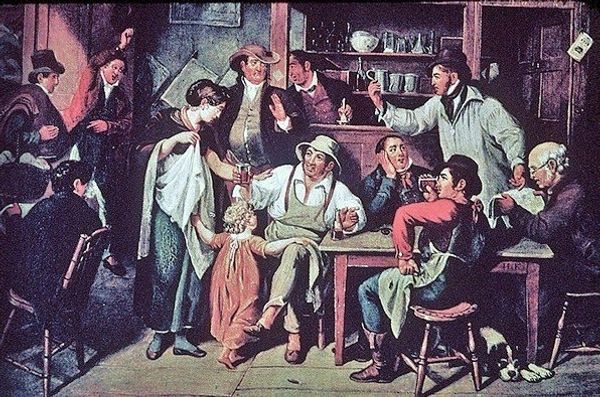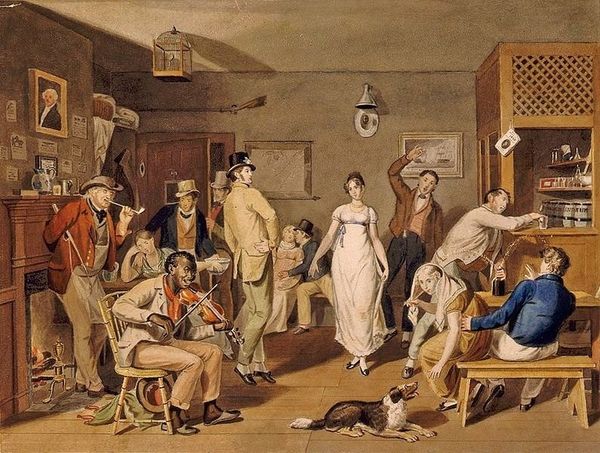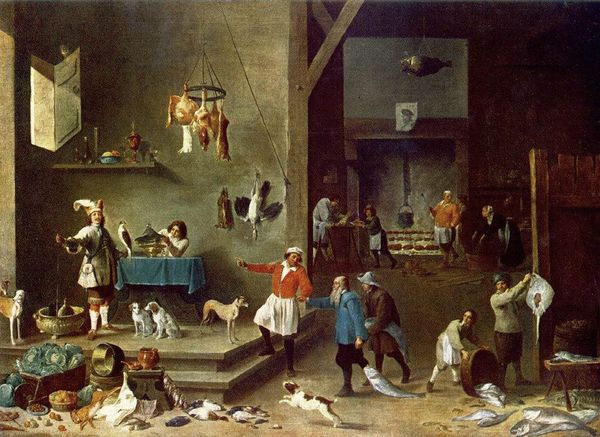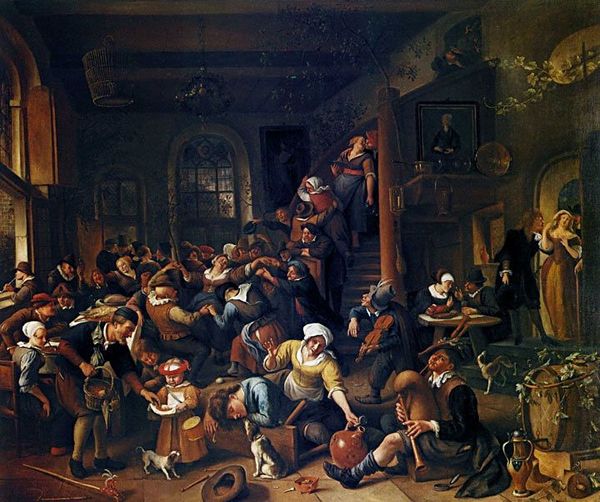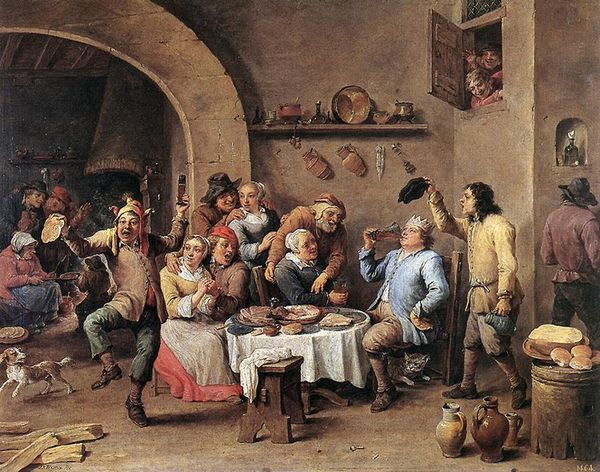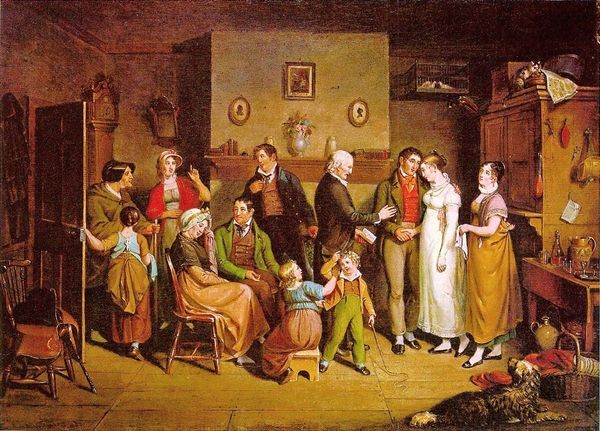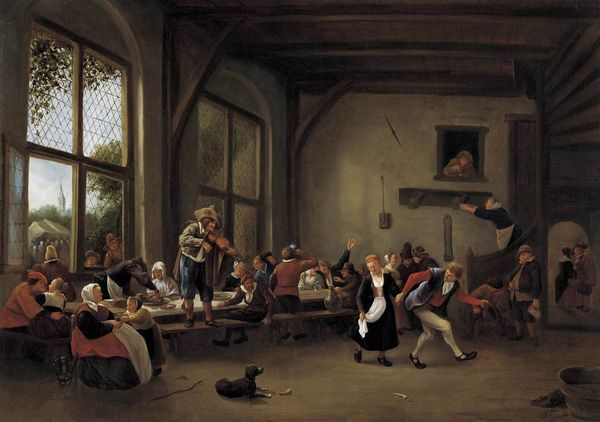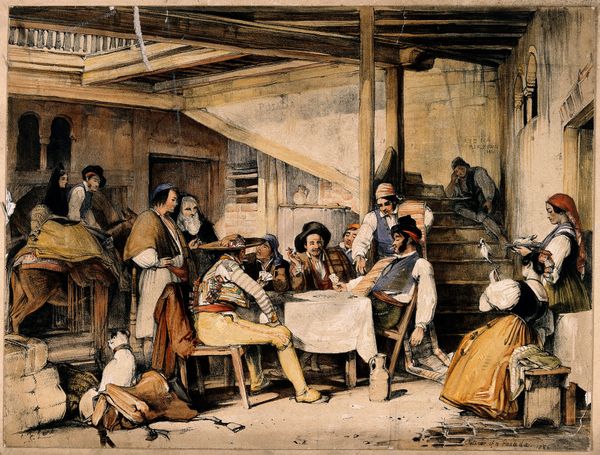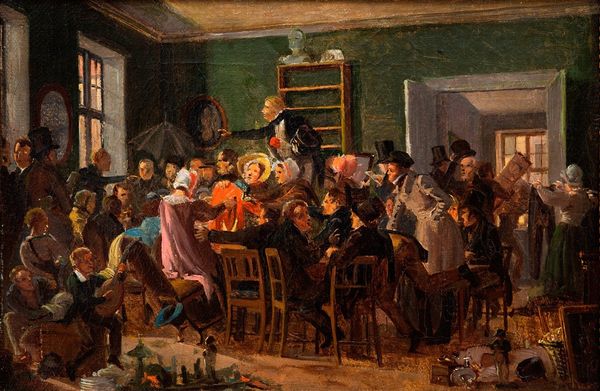
painting, oil-paint
#
portrait
#
gouache
#
painting
#
oil-paint
#
oil painting
#
romanticism
#
genre-painting
#
mixed media
Copyright: Public domain
Curator: Let's take a closer look at "In an American Inn," an oil painting created in 1814 by John Lewis Krimmel. It's a bustling scene. Editor: Yes, immediate impression: clamorous, convivial, a touch chaotic, and intensely masculine despite the women present. What do you think about the gender representation in this tableau? Curator: Well, genre painting in this period often depicted idealized or romanticized scenes of everyday life, often obscuring actual life for women and under-represented communities. Editor: Exactly. Who gets to participate in this "American" experience is visibly limited. It is telling that the narrative excludes the voices and bodies that shape our social existence, such as queer people and people of color. Curator: In this crowded tavern scene, Krimmel illustrates an interior, filled with men drinking, gambling, reading. There's even a small dog resting under a table, adding to the sense of candid observation. But, as you point out, it's selective. Editor: The composition is quite theatrical. Consider the way the artist uses light—almost like a stage spotlight—to focus our attention on certain figures and interactions, subtly drawing the viewer into this curated world. It reminds me how crucial art and historical images were in promoting a nation-building project at the time. What were these spaces? Were these true democratic spaces for dialogue, or more akin to spaces for solidifying a white patriarchal project? Curator: Krimmel arrived in America from Germany around 1809. His genre scenes are fascinating records of early 19th-century American life. His pieces helped shape visual culture that romanticized daily life as entertainment. Editor: And, like so much genre painting of the era, there's an undeniable sense of… exclusion. The promise of this interior world wasn't accessible for many who are written out. A nuanced consideration of our nation’s origins demands a more thorough intersectional and critical awareness. Curator: Agreed. Studying works like this allows us to dissect the ways history is told and by whom. Editor: Yes, precisely; by confronting and acknowledging its silences, we start the dialogue necessary for an equitable and accurate representation.
Comments
No comments
Be the first to comment and join the conversation on the ultimate creative platform.
